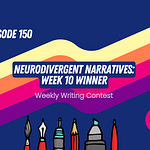An episode that doesn’t assume the “big picture” first!
In Episode 133 of The Autistic Culture Podcast, we begin from the ground up on our journey through the 10 Pillars of Autistic Culture as we start with Pillar 1— Bottom-Up Processing. Here’s what defines this cultural trait:
Detail-first thinking: Autistic minds gather information from the ground up, building meaning through sensory input, observed patterns, and logical systems.
Monotropism: We deep-dive into specific interests and tasks, driven by focused curiosity rather than generalized frameworks.
Hyperfocus and complex analysis: These traits allow for immersive attention, precise deduction, and strategic decision-making.
Sensory integration: Proprioception and interoception inform our responses to emotional and social cues with accuracy and nuance.
Nonlinear social fluency: We understand people by noticing behaviors, not by relying on social templates or stereotypes.
SPIN-powered cognition: Special interests are not distractions — they are the engines of learning and innovation.
Autonomy in method: We prefer to figure things out ourselves and follow processes that make logical sense, even when unconventional.
Strategic solitude: Alone time isn’t loneliness — it’s essential cognitive processing time for autistic thinkers.
Injustice sensitivity: Bottom-up logic often clashes with top-down authority, particularly when systems are unfair or inconsistent.
Visionary pattern recognition: Autistic culture leads in science, logic, and systems design because we see the overlooked details that make up the whole.
Autistic people, generally speaking, process information bottom-up. We start with details, anomalies, inconsistencies. We don’t assume the “big picture” first—we build it ourselves. This cognitive style clashes in top-down cultures, but fits more comfortably in bottom-up ones. In bottom-up cultures, autistic cognition can be framed as insight. In top-down cultures, it is often framed as insubordination or incompetence.
What you’re about to hear is a special remastered version of an earlier episode from our archives that keys in on Pillar 1 with a deep dive on another fictional bottom-up processor, the OG, Sherlock Holmes.
As you listen to this episode, notice references to bottom-up processing and how that pillar holds up other aspects of Autistic people, for instance, why it makes stimming so important, or small talk so infuriating.
Start thinking of the ways these pillars have been weaponized and medicalized. How even Sir Arthur Conan Doyle turns Sherlock into a misanthrope, or Sherlock himself becomes an opium addict, because of the pathologization of his natural culture.
As you listen and pay attention to that bottom-up pillar with deeper context, I want you to think of how your internalized ableism has caused you to push back on your own bottom-up processing and instead try seeing where you can lean into it and how that might improve your mental health.
So, whether you’re autistic, exploring the possibility, or just someone who loves and respects autistic people, you are welcome here.
We’re saving you a seat!
This episode is a part of our Start Here Series, which is designed for new listeners of the show who are wondering, “where should I start?” to have a solid foundation for their experience here. It’s also for loyal listeners to begin to more fully embody the pillars of Autistic culture with more clarity and pride. Join the convo with #AutisticCulture!
Related Episodes:
Lessons in Chemistry
Broadway is Autistic - particularly the references to Sondheim, whose musicals are very bottom-up!
Washington DC is Autistic
Follow us on Instagram
Find us on Apple Podcasts and Spotify
Learn more about Angela at AngelaKingdon.com
Our Autism-affirming merch shop













